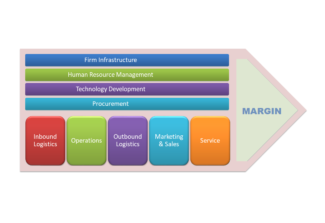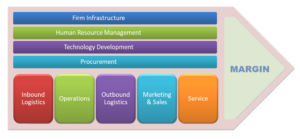HR01 – Communication and Recognition

The skilled communicator enhances employer-employee relationships, commitment to organizational purpose and goals, employee satisfaction and motivation, and a positive workplace culture.
Effective communication skills also support self-development in helping to clarify your thoughts, understand the meaning of others not only from their words but also their nonverbal cues, and effectively convey information, feelings, and opinions.
Interpersonal communication is the most effect method in recognizing and rewarding the contributions of individuals or groups within your organization. Research clearly shows the strong link between personal recognition, exceptional employee performance, and excellent teamwork.



 Staff capacity affects the maximum achievement an organization can attain at any given point in time. Key elements include the intellectual ability, knowledge, and skills of teams and individuals, the quality and quantity of resources available to achieve outcomes, and the impact of social organization and environmental factors in the workplace.
Staff capacity affects the maximum achievement an organization can attain at any given point in time. Key elements include the intellectual ability, knowledge, and skills of teams and individuals, the quality and quantity of resources available to achieve outcomes, and the impact of social organization and environmental factors in the workplace.
 Successful work units encourage independent thinking and creative problem solving, motivate and inspire staff, and reduce and eliminate negative influences and activities that hinder productivity and harmony.
Successful work units encourage independent thinking and creative problem solving, motivate and inspire staff, and reduce and eliminate negative influences and activities that hinder productivity and harmony.
 People want to work for and do business with organizations that demonstrate respect as part of their culture. Whether it is with co-workers, customers, suppliers, or anyone you encounter, respectful conduct has no downside, and is desired and expected in every interaction.
People want to work for and do business with organizations that demonstrate respect as part of their culture. Whether it is with co-workers, customers, suppliers, or anyone you encounter, respectful conduct has no downside, and is desired and expected in every interaction.
 This course provides insights into the true power relationships in the workplace. While traditional power structures are designed to provide a chain of command in achieving the goals of the organization, referent or expert power is often the most influential factor in determining staff compliance, motivation and achievement.
This course provides insights into the true power relationships in the workplace. While traditional power structures are designed to provide a chain of command in achieving the goals of the organization, referent or expert power is often the most influential factor in determining staff compliance, motivation and achievement.
 Performance standards set the bar for team and individual achievement, and form the basis for appraising employee and unit performance. Collaboration is an often-overlooked element in setting expectations. Some business leaders believe that employee involvement will lead to diffuse or lesser expectations, but research has shown that employees are often the experts when it comes to understanding and setting both high and realistic expectations. A collaborative performance plan will have a much higher chance of success in directing employee efforts to achieve specific results. The effective setting of standards will support organizational growth as well as employee professional growth.
Performance standards set the bar for team and individual achievement, and form the basis for appraising employee and unit performance. Collaboration is an often-overlooked element in setting expectations. Some business leaders believe that employee involvement will lead to diffuse or lesser expectations, but research has shown that employees are often the experts when it comes to understanding and setting both high and realistic expectations. A collaborative performance plan will have a much higher chance of success in directing employee efforts to achieve specific results. The effective setting of standards will support organizational growth as well as employee professional growth.
 Effective workplace teams go through an evolutionary process as they move toward collaboration and productivity. Facilitating higher functioning and higher efficiency means breaking down barriers such as isolation among staff, and increasing commitment to the organization’s mission and vision. Teamwork combines a variety of objectives that require component tasks in completing the team goal. Members play distinct roles in providing expert knowledge to complete those tasks. Before colleagues can function effectively as a team, everyone involved must learn how to be a member of a team and understand their role.
Effective workplace teams go through an evolutionary process as they move toward collaboration and productivity. Facilitating higher functioning and higher efficiency means breaking down barriers such as isolation among staff, and increasing commitment to the organization’s mission and vision. Teamwork combines a variety of objectives that require component tasks in completing the team goal. Members play distinct roles in providing expert knowledge to complete those tasks. Before colleagues can function effectively as a team, everyone involved must learn how to be a member of a team and understand their role.
 Contingency theory is based on the premise that there is no exact template or blueprint for leading a team, building a successful business operation, or corporate structure. The optimal course of action depends on the unique internal and external variables of the enterprise. The contingency approach to managing relies on the ability of the manager to recognize and understand the structures that affect the unit both positively and negatively.
Contingency theory is based on the premise that there is no exact template or blueprint for leading a team, building a successful business operation, or corporate structure. The optimal course of action depends on the unique internal and external variables of the enterprise. The contingency approach to managing relies on the ability of the manager to recognize and understand the structures that affect the unit both positively and negatively.
 This course examines the managerial aspects of leadership and the significance of efficiency, preparedness, and effectiveness in managing the work environment. Leaders must be managers, and managers must be leaders. Both functions involve influencing others, working with groups, and goal accomplishment. Knowing when and why to play each role is a key to your success.
This course examines the managerial aspects of leadership and the significance of efficiency, preparedness, and effectiveness in managing the work environment. Leaders must be managers, and managers must be leaders. Both functions involve influencing others, working with groups, and goal accomplishment. Knowing when and why to play each role is a key to your success.
 An effective leader must efficiently prioritize the myriad tasks, decisions and activities that occur in the daily life of an organization, and manage time effectively. Prioritization is both an art and a science; being able to determine what is urgent versus important. How artful you are and how much science you employ is usually an unconscious choice. Your personality impacts your management of time and your prioritization of issues. Your physical makeup and condition play roles as well. Your thoughts, feelings and behaviors work together, and are affected by how you feel physically. Someone who is impulsive is less likely to be effective in a crisis situation than someone who is methodical. Someone who is anxious around authority figures or feels stressed by having to discipline a coworker is less likely to approach either situation with a clear focus. That’s not to say that humility and compassion aren’t called for. It’s about the stressors and our responses to them.
An effective leader must efficiently prioritize the myriad tasks, decisions and activities that occur in the daily life of an organization, and manage time effectively. Prioritization is both an art and a science; being able to determine what is urgent versus important. How artful you are and how much science you employ is usually an unconscious choice. Your personality impacts your management of time and your prioritization of issues. Your physical makeup and condition play roles as well. Your thoughts, feelings and behaviors work together, and are affected by how you feel physically. Someone who is impulsive is less likely to be effective in a crisis situation than someone who is methodical. Someone who is anxious around authority figures or feels stressed by having to discipline a coworker is less likely to approach either situation with a clear focus. That’s not to say that humility and compassion aren’t called for. It’s about the stressors and our responses to them.
 Change management and change leadership are two distinctly different processes requiring different strategies and different skills. Organizations exist in a world of constant change, and both skill sets are required to effectively navigate the present in order to grow for the future.
Change management and change leadership are two distinctly different processes requiring different strategies and different skills. Organizations exist in a world of constant change, and both skill sets are required to effectively navigate the present in order to grow for the future.
 Developing a fuller awareness of the business; its Strengths and Weaknesses; Opportunities and Threats; aids in strategic planning and effective decision-making. SWOT analysis can offer valuable perspectives at any stage of the organization’s evolution.
Developing a fuller awareness of the business; its Strengths and Weaknesses; Opportunities and Threats; aids in strategic planning and effective decision-making. SWOT analysis can offer valuable perspectives at any stage of the organization’s evolution.
 The original concept of LEAN management had, at its core, the goal of eliminating inefficiencies and wasted resources. It has evolved to include increased production and reduced cost through improved work processes. While lean management as a practice has existed for over half a century, it continues to be the standard for world-class manufacturing and has application in almost any organization wanting to establish a culture of continuous improvement.
The original concept of LEAN management had, at its core, the goal of eliminating inefficiencies and wasted resources. It has evolved to include increased production and reduced cost through improved work processes. While lean management as a practice has existed for over half a century, it continues to be the standard for world-class manufacturing and has application in almost any organization wanting to establish a culture of continuous improvement.
 Asset management is a phrase commonly used in the financial industry. It is the term used to denote the coordinated activities of any organization to realize value from its assets. This course looks at the processes used to effectively develop, operate, maintain, upgrade, and dispose of assets cost-effectively. Assets are typically considered to be the resources used by the organization achieve the necessary outputs. Internal rate of return, net present value, and other calculations are used to inform business decisions, ensuring positive returns in excess of costs.
Asset management is a phrase commonly used in the financial industry. It is the term used to denote the coordinated activities of any organization to realize value from its assets. This course looks at the processes used to effectively develop, operate, maintain, upgrade, and dispose of assets cost-effectively. Assets are typically considered to be the resources used by the organization achieve the necessary outputs. Internal rate of return, net present value, and other calculations are used to inform business decisions, ensuring positive returns in excess of costs.
 This course is outward-focused on the delivery of true and/or perceived value to customers. It examines the value proposition elements of cost, quality, functionality and service.
This course is outward-focused on the delivery of true and/or perceived value to customers. It examines the value proposition elements of cost, quality, functionality and service.
 Sales statistics including Key Performance Indicators (KPI) regularly inform decision making in a business environment. Statistics provide information to assist in making the most beneficial decisions, but someone has to decide what indicators should be used, why they matter, and the level of importance they should be given.
Sales statistics including Key Performance Indicators (KPI) regularly inform decision making in a business environment. Statistics provide information to assist in making the most beneficial decisions, but someone has to decide what indicators should be used, why they matter, and the level of importance they should be given.
 Business advantage is traditionally defined within two spheres: cost advantage and differentiation advantage. It was once believed that trying to focus on both would leave a company adrift, unable to compete in either. Savvy 21st century marketers have proved otherwise.
Business advantage is traditionally defined within two spheres: cost advantage and differentiation advantage. It was once believed that trying to focus on both would leave a company adrift, unable to compete in either. Savvy 21st century marketers have proved otherwise.
 Every business has customers. Sometimes they are internal, but most often they are external, and vital not only to the current state of the organization, but its future.
Every business has customers. Sometimes they are internal, but most often they are external, and vital not only to the current state of the organization, but its future.
 The value chain is used to identify opportunities for differentiation or cost advantage, helping the organization to select the most profitable differentiation or cost variables. The appropriate level for constructing a value chain is the business unit. As products pass through a chain of activities in order, they should gain value in each step. The chain of activities gives the products more added value than the sum of added values of all activities.
The value chain is used to identify opportunities for differentiation or cost advantage, helping the organization to select the most profitable differentiation or cost variables. The appropriate level for constructing a value chain is the business unit. As products pass through a chain of activities in order, they should gain value in each step. The chain of activities gives the products more added value than the sum of added values of all activities.
 Organizational change as part of the business lifecycle, when positive, fuels continuous improvement and growth. Without positive change, the organization will eventually expire. An effective continuous improvement strategy is contingency-based, but dependent on structure that is aligned with the core values of the organization.
Organizational change as part of the business lifecycle, when positive, fuels continuous improvement and growth. Without positive change, the organization will eventually expire. An effective continuous improvement strategy is contingency-based, but dependent on structure that is aligned with the core values of the organization.